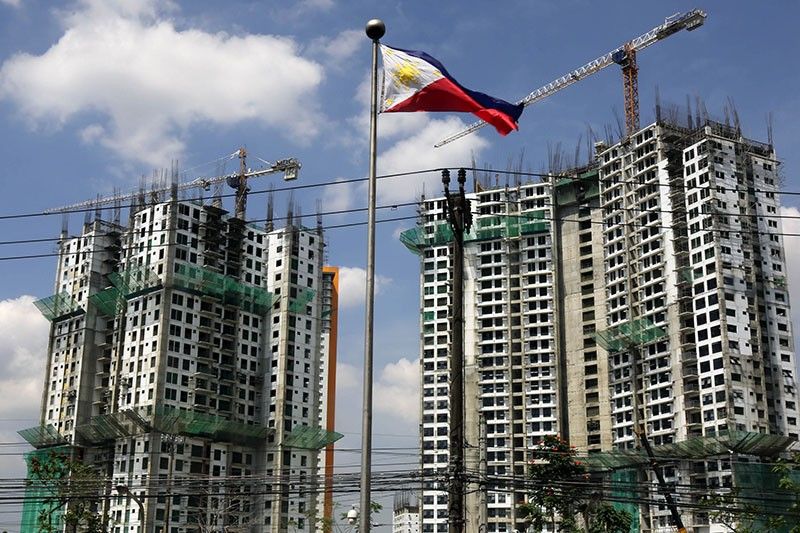Commentary: From list to mechanism that supports Philippines’ economic recovery

The National Economic and Development Authority recently presented four priority areas that it wanted the private sector to have more investments to help in the country’s economic recovery. These four areas were: health, food resilience, education continuity and digital transformation.
The reason these are priority areas is clear. Learning continuity and digital transformation are essential to sustaining current distance learning, online commerce and from home work arrangements amidst the continuing lockdowns.
The pandemic has also highlighted the need for food resilience and food security. When cities were indefinitely cut off from the rest of the country in the early months of lockdown, access to healthy and nutritious food in these affected areas was a top concern. Obviously, in the midst of a pandemic, investments that improve the health system are, too, of utmost importance.
However, there may be a more optimal approach than seeing these priorities as a list of four individual objectives. Given how we have seen, in the Philippines and around the world, the effectiveness of the whole-of-society collaborative approach in responding to COVID-19, a better way to understand this list is not as a set of independent objectives, but rather an interconnected mechanism that together support our country’s economic recovery.
Perhaps, the easiest way to illustrate this mechanism is by taking the NEDA’s fourth priority area of digital transformation as an example.
On its own, we understand that prioritizing digital transformation is important since it is because of it that we have continued to function and go about living an albeit modified version of our daily lives for what is almost a year now.
With social distancing and restrictions on mobility, the internet has allowed millions of office workers and professionals to transition to work-from-home setups. E-commerce has also boomed since the lockdown with businesses scrambling to transition to selling their goods and services through online e-commerce platforms.
With the broader coverage and improving internet speeds, we have also been able to stay in touch and celebrate with friends and family, despite the physical distance. It is also why some of us are able to binge watch K-dramas all weekend long.
At the same time, it is also because of digital technology that distance learning has become an option for so many. Last year, it was estimated that over 1.2 billion children were out of the classroom due to the pandemic.
Here in the Philippines, face-to-face classes are still not allowed, and at the rate the country is going, it is more than likely that this distance learning setup with continue into the next school year.
However, while online education has allowed millions of kids to still fill their virtual classrooms, distance learning has also revealed another downfall of the country’s vast digital divide.
Many school aged children do not have access to the devices needed to learn online, while others live in areas that are underserved or unserved by the country’s telecommunications companies.
With the continuing lockdowns, we risk leaving a generation of unconnected kids behind. This is one important reason why investing in and improving the digital infrastructure should be a top priority, not only of the private sector but of government as well.
The digital transformation also intersects with the country’s food security and resilience. COVID-19 has really tested food supply chains and exposed the weakness of our current system.
When the global and local supply chains were stopped in their tracks by the pandemic, here in the Philippines, the government had to implement a price freeze on goods and establishments had to limit the number of essential products that each customer could buy to avoid hoarding.
Digital transformation has the potential to help address growing demand for food and make food systems more efficient and sustainable. For one, technology can give farmers and other food producers better access to information and markets. This allows them to increase their productivity by incorporating new techniques and technologies into their processes.
Furthermore, by connecting these food producers directly to their markets, operational costs are reduced and supply chains are streamlined. This allows food producers, many who live below the poverty line, to reap the benefits of their hard work. At the same time, it also creates more vibrant and resilient food value chains.
The value of digital tools has also been evident in the health space. Digital tools can also play a key role in the pandemic response and impact mitigation. We have seen how apps on mobile phones can be used for contact tracing. Also, with the country’s health care stretched to its limits by COVID-19, outpatients made use of telemedicine services for their healthcare needs.
However, technology can do so much in terms of healthcare. We have yet to see the use of big data in the country’s healthcare system. For instance, patient records are still predominantly on paper and sharing of patient digital records and drug prescriptions among health institutions is unheard of.
In the same way that the benefits of digital technology cut across other sectors, health, continuing education and food resilience cut across sectors as well. Being food resilient means having sustainable supply chains in place to ensure Filipinos have enough access to safe and nutritious food to allow them to stay healthy.
Investing in healthcare could also lead to a quicker return of economic activity and in person activities, including the resumption of physical classes. Continuing education, as always, is key to upskilling Filipinos, allowing them to innovate and accelerate the country’s economic recovery.
Therefore, when we talk about these four priority areas, we should not see them as individual objectives, but rather an interconnected mechanism that is vital for our nation’s economic recovery.
And while private sector investment is a critical cog this mechanism, the role of government in facilitating collaboration and itself investing in these priority areas cannot be emphasized enough.
Paco Pangalangan is the executive director of think tank Stratbase ADR Institute.
- Latest
























